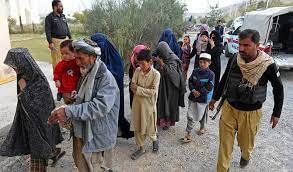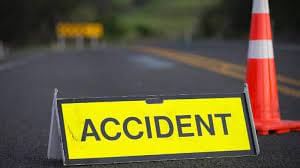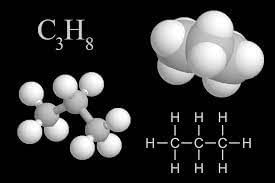UPSC Daily Current Affairs- 3rd November 2023 | Current Affairs & Hindu Analysis: Daily, Weekly & Monthly PDF Download
GS-I
Pavana River
Subject: Geography

Why in News?
Citizens and environmental activists have expressed concern over the thick layer of toxic foam seen on the Pavana River recently.
About the Pavana River:
- Location: This river is situated in the western part of Maharashtra state, within the Pune District.
- River: It is a notable river that flows through Pune City and forms a natural boundary between Pune City and the Pimpri-Chinchwad area.
- Origin: The river originates from the Western Ghats, approximately 6 km to the south of Lonavala.
- Tributary: It serves as a tributary to the Bhima River and eventually merges with the Mula River within Pune city.
- Course: Initially flowing eastward, it changes direction to the south and passes through suburban areas like Dehu, Chinchwad, Pimpri, and Dapodi before joining the Mula River.
- Dam: A dam is constructed on this river at Pavana Nagar, known as the "Pavana Nagar Dam."
- Pavana Nagar Dam Details:
- Type: Pavana Nagar Dam is an earthfill gravity dam.
- Dimensions: It is 1,329 meters (4,360 feet) long and 42.37 meters (139.0 feet) high.
- Storage Capacity: The dam has a gross storage capacity of 30,500.00 km³.
- Purpose: It was built primarily to provide ample water supply to the nearby localities and serves as the main source of water in the region.
Source: Hindustan Times
Galapagos Islands
Subject: Geography

Why in News?
Scientists recently found two new coral reefs and two unexplored seamounts in the Galapagos Islands.
About the Galapagos Islands:
- Location: The Galápagos Islands are situated in the Pacific Ocean, approximately 600 miles off the coast of Ecuador.
- Geography: This archipelago comprises 19 islands, with 13 large and 6 small ones, along with numerous islets and rocks, covering an area exceeding 17,000 square miles.
- Equatorial Distribution: The islands are distributed on both sides of the Equator and offer an incredible underwater wildlife spectacle with abundant marine life.
- Formation: The rugged mountain landscape of the Galápagos Islands was shaped by multiple volcanic eruptions.
- Age: In comparison to most oceanic archipelagos, the Galápagos Islands are relatively young. The largest and youngest islands, Isabela and Fernandina, have existed for less than one million years, while the oldest islands, Española and San Cristóbal, are estimated to be between three to five million years old.
- Highest Point: The highest peak in the Galápagos Islands is Mount Azul, standing at 5,541 feet above sea level.
- Climate: The islands are characterized by a climate with low rainfall, low humidity, and relatively low air and water temperatures.
- UNESCO World Heritage Site: The Galápagos Islands were designated as a UNESCO World Heritage site in 1978.
- Biodiversity: The Galápagos Islands are renowned for their diverse range of plant and animal species, many of which are endemic, meaning they are found nowhere else in the world.
- Key Species: Notable endemic species include the giant Galápagos tortoise (Chelonoidis nigra), the marine iguana (Amblyrhynchus cristatus), the flightless cormorant (Phalacrocorax harrisi), and the Galápagos penguin.
- Unique Penguin Species: The Galápagos penguin (Spheniscus mendiculus) is the sole penguin species to inhabit the Northern Hemisphere.
What are seamounts?
- Definition: A seamount is an underwater mountain characterized by steep sides that rise from the ocean floor.
- Formation: Most seamounts are the remnants of extinct volcanoes, and they often exhibit a cone-shaped structure. Some seamounts have additional features, such as craters and linear ridges, and there are variations known as guyots, which have flat summits.
- Size Criteria: To be classified as a seamount, the feature must have a vertical relief of at least 1,000 meters (3,300 feet) above the surrounding seafloor.
- Global Distribution: Seamounts are present in all the world's ocean basins.
- Ecological Importance: Seamounts are considered "oases of life" in the ocean, hosting higher species diversity and biomass compared to the flat seafloor. They serve as a habitat where organisms can settle, attach, and grow.
Source: Times of India
CBAM will kill EU Manufacturing: Commerce Minister
Subject: Social Issues

Why in News?
Commerce and Industry Minister has strongly criticized the European Union’s (EU) proposed Carbon Tax on imports, deeming it “ill-conceived” and warning of potential consequences for the EU’s manufacturing sector.
- He asserted that even if the plan, set to take effect in 2026, proceeds, India will counter it by imposing its own carbon tax.
What is the Carbon Border Adjustment Mechanism (CBAM)?
| Proposed by | European Union (EU) |
| Purpose | To reduce carbon emissions from imported goods and prevent competitive disadvantage against countries with weaker environmental regulations |
| Objectives | Reduce carbon emissions from imported goods Promote a level playing field between the EU and its trading partners Protect EU companies that have invested in green technologies |
How does CBAM work?
| Coverage | Applies to imported goods that are carbon-intensive |
| Integration | Covered by the EU’s Emissions Trading System (ETS), which currently covers industries like power generation, steel, and cement |
| Implementation | CBAM taxes would be imposed on the carbon content of imported goods at the border, and the tax rates would be based on the carbon price in the EU ETS |
| Exemptions | Possible exemptions for countries that have implemented comparable carbon pricing systems |
| Revenue Use | Revenue generated from CBAM taxes could be used to fund the EU’s climate objectives, such as financing climate-friendly investments and supporting developing countries’ climate efforts |
Who will be affected by CBAM?
| Details | |
| Countries | Non-EU countries, including India, that export carbon-intensive goods to the EU |
| Items | Initially covers iron and steel, cement, aluminium, fertilisers, and electric energy production |
| Expansion | The scope of the CBAM may expand to other sectors in the future |
Advantages offered
- Encourages non-EU countries to adopt more stringent environmental regulations, reducing global carbon emissions.
- Prevents carbon leakage by discouraging companies from relocating to countries with weaker environmental regulations.
- Generates revenue that could be used to support EU climate policies.
Challenges with CBAM
- Difficulty in accurately measuring the carbon emissions of imported goods, especially for countries without comprehensive carbon accounting systems.
- Potential for trade tensions with the EU’s trading partners, especially if other countries implement retaliatory measures.
Consequences for EU Manufacturing
- Auto Sector Impact: The minister suggested that the European auto sector could be one of the first casualties, particularly affecting steel and aluminum usage.
- Opportunity for India: Goyal saw this as an opportunity for India to develop a robust auto sector, leveraging cost advantages in the global market.
India’s Response and Carbon Tax Strategy
- Counteractive Measures: India intends to neutralize the impact of the EU’s carbon tax by imposing its own.
- Investing in Green Energy: Revenue from the Indian carbon tax would be channelled into the country’s green energy transition, which, indirectly, could help exporters transition to cleaner energy and reduce their carbon footprint.
- Negotiations with EU: The government is engaged in dialogues with EU counterparts regarding the levy’s fairness and pricing disparities.
Conclusion
- The EU’s proposed Carbon Tax and India’s counterstrategy highlight the complexities of international trade, environmental concerns, and the potential consequences for various industries.
- India’s strong stance underscores its commitment to safeguarding its economic interests while engaging in constructive negotiations with the EU to ensure a fair and mutually beneficial outcome.
Source: Indian Express
GS-II
Pakistan’s Illegal Deportation of Afghan Refugees
Subject: International Relations

Why in News?
Pakistan’s government has recently implemented an order mandating the expulsion of all foreigners, with a significant impact on Afghan refugees, the largest refugee group in Pakistan.
- This move has raised questions about the fate of Afghan migrants returning to a country facing numerous challenges, including a collapsed economy, natural disasters, food insecurity, and human rights issues under Taliban rule.
Afghan Refugees in Pakistan
- Historical Background: Afghan refugees have sought shelter in Pakistan since the late 1970s, primarily due to the Soviet invasion of Afghanistan in 1979. Subsequently, they fled during the Afghan civil war in the 1990s and the Taliban regime’s rule.
- Afghan Refugee Population: Pakistan is home to over 4 million Afghans, with an estimated 1.7 million lacking proper documentation.
- Deportation Deadline: The government set a deadline of October 31 for illegal migrants to leave Pakistan, after which they would face arrest and expulsion.
- Deportation Process: Hours before the deadline, authorities began rounding up undocumented migrants, demolishing some homes to compel them to leave.
- Border Crossings: Thousands of Afghans crossed into Afghanistan through border crossings, including Torkham and Chaman.
Reasons for Deportation
- Economic Concerns: Pakistan cites economic strain as a key reason for deportation, asserting that undocumented migrants who do not pay taxes strain its limited resources.
- Security Concerns: Authorities claim that Afghan migrants have been involved in terror attacks, street crimes, and organized crimes like drug trafficking. They are accused of participating in attacks against the government and the army.
- Political Timing: The deportation coincides with Pakistan’s caretaker government, insulating it from potential political or electoral repercussions.
Challenges for Returnees
- Uncertain Future: Afghan migrants returning to Afghanistan face an uncertain future amid economic collapse, earthquakes, food shortages, and human rights violations under Taliban rule.
- Education and Employment: Women and girls returning to Afghanistan may be denied education and job opportunities.
- US-Affiliated Migrants: Those who worked for the US before the Taliban’s takeover are particularly vulnerable.
Taliban’s Response
- Criticism and Request for Time: The Taliban has criticized the deportations and asked for more time to prepare for the returnees.
- Humanitarian Efforts: Afghan authorities are establishing temporary camps near the border to provide food, shelter, healthcare, and SIM cards to returnees. The Taliban has expressed a willingness to assist them in finding jobs.
Conclusion
- This deportation is a contentious move driven by economic and security concerns.
- The international community, including the Taliban, is grappling with the challenges posed by this situation, particularly as winter approaches and Afghanistan faces additional hardships.
Source: The Hindu
Alarming Road Accidents and Fatalities in India in 2022
Subject: International Relations

Why in News?
A recent government report titled ‘Road Accidents in India – 2022’ has revealed a concerning surge in road accidents, fatalities, and injuries.
- The report sheds light on the grim statistics of road safety in the country.
Road Accidents in India
- The report is based on information provided by police departments of States and Union Territories collected on a calendar year basis.
- Standardized formats from the UN Economic and Social Commission for Asia and the Pacific (UNESCAP) were used for data collection under the Asia Pacific Road Accident Data (APRAD) base project.
Statistical Overview:
- In 2022, India witnessed a total of 4,61,312 road accidents. It resulted in a tragic loss of 1,68,491 lives.
- Additionally, 4,43,366 individuals sustained injuries.
State-Specific Data
- Tamil Nadu recorded the highest number of road accidents on National Highways in 2022 (64,105 accidents or 13.9%).
- Madhya Pradesh followed closely with 54,432 accidents (11.8%).
- Uttar Pradesh reported the highest number of fatalities (22,595 or 13.4%) due to road accidents.
- TN came second with 17,884 fatalities (10.6%).
Why discuss this?
(1) Year-on-Year Increase:
- The report disclosed an alarming year-on-year increase of 11.9% in road accidents.
- Fatalities also rose by 9.4% in the same period.
- The number of injuries surged by a staggering 15.3% compared to the previous year.
(2) Accident Distribution:
- The accidents were distributed across different types of roads as follows:
- National Highways, including Expressways: 32.9% (Fatalities: 36.2%)
- State Highways: 23.1% (Fatalities: 24.3%)
- Other roads: 43.9% (Fatalities: 39.4%)
(3) Demographic Impact:
- Young adults: Mostly between 18 and 45 years old comprised a significant portion, accounting for 66.5% of road accident victims in 2022.
- Working People: Within the working age group of 18 to 60 years represented 83.4% of total road accident fatalities.
(4) Rural vs. Urban Accidents:
- Approximately 68% of road accident fatalities occurred in rural areas.
- Urban areas accounted for 32% of total accident deaths in the country.
(5) Vehicle Categories
- Two-wheelers remained the most prominent vehicle category involved in road accidents and fatalities for the second consecutive year.
- Light vehicles, including cars, jeeps, and taxis, ranked a distant second.
What global reports have to say?
- A recent analytical series published by The Lancet highlights the potential to reduce road accident-related deaths in India and other countries by 25 to 40%.
- This reduction is achievable through preventive interventions that target four key risk factors.
Major issues identified
In developing countries like India, several structural problems persist:
- High Speed: Excessive speed contributes to accidents.
- Driving Under the Influence: Alcohol-impaired driving poses a substantial risk.
- Unplanned Motorization: Rapid motorization and urbanization create challenges.
- Highway Development: Speedy highway construction often lacks accommodation for diverse traffic speeds.
- Vehicle Conditions: Ramshackle vehicles, wrong-side driving, and inadequate traffic policing are widespread issues.
India-specific Problems
- Weak Law Enforcement: Inconsistent enforcement of traffic laws, often resolved through bribery.
- Speeding: Higher vehicle speeds and increased traffic volume on highways.
- Engineering Challenges: Gaps in highway medians, untreated intersections, and missing crash barriers.
- Behavioural Issues: Violations such as wrong-side driving, lane misuse, and traffic light disobedience.
- Lack of Immediate Trauma Care: Insufficient trauma care on highways leading to higher fatalities.
Steps Taken by India
India has undertaken various measures to address road safety concerns:
- Sundar Committee (2007): India lacks competent investigation units to determine accident causes.
- Amendment to Motor Vehicles Act (2019): Legislative changes, though not uniformly implemented across states.
- National Road Safety Board: Establishment with advisory powers for safety reforms.
- World Bank Support: Approval of a $250 million loan for the India State Support Programme for Road Safety.
Challenges in Implementation
Despite efforts, the focus remains conventional, with limited emphasis on structural changes:
- User Behavior Focus: States prioritize user behavior and education over structural improvements.
- Low Emphasis on Engineering Standards: Inadequate attention to raising engineering standards for roads, signage, signals, and accident investigation training.
- Responsibility Fixation: Neglect in assigning responsibility to government departments for road infrastructure design, creation, and maintenance.
Way forward
- Promoting awareness and responsible behaviour.
- Better road design, maintenance, and signage.
- Strictly enforcing traffic rules and penalties.
- Ensuring vehicle safety and roadworthiness.
- Enhancing first aid and paramedic care in Golden Hour.
Source: The Hindu
GS-III
White Hydrogen
Subject: Science and Technology

Why in News?
Recently, scientists looking for fossil fuels beneath the ground in northeastern France have discovered a large reservoir of white hydrogen.
About White Hydrogen
- White hydrogen is also referred to as “natural,” “gold” or “geologic” hydrogen.
- It is naturally produced in the Earth’s crust and is considered a potential source of clean energy.
- It generally exists combined with other molecules.
- White hydrogen has several advantages over other types of hydrogen
- It causes no CO2 emissions when used as a fuel.
- It is compatible with existing infrastructure and technologies for hydrogen production and utilisation.
- It is cheaper and more efficient than steam reforming or electrolysis.
- It is abundant and renewable.
- Its deposits have been found across the world, including in the US, Eastern Europe, Russia, Australia, France, and other countries.
- It is estimated that globally, there could be tens of billions of tonnes of white hydrogen.
Types of Hydrogen:
- Grey Hydrogen: It is produced via coal or lignite gasification(black or brown), or via a process called steam methane reformation (SMR) of natural gas or methane (grey). These tend to be mostly carbon-intensive processes.
- Blue Hydrogen: It is produced via natural gas or coal gasification combined with carbon capture storage (CCS) or carbon capture use (CCU) technologies to reduce carbon emissions.
- Green Hydrogen: It is produced using electrolysis of water with electricity generated by renewable energy.
Source: The Hindu
Propane
Subject: Science and Technology

Why in News?
Recently, state-run GAIL (India) Ltd. inked a 15-year agreement with Bharat Petroleum Corp. Ltd. (BPCL) to supply propane for its upcoming petrochemical facility in Usar, Maharashtra.
About Propane:
- It is a colourless, easily liquefied, gaseous hydrocarbon(compound of carbon and hydrogen).
- It is an alkane, which means it consists of only single covalent bonds between carbon and hydrogen atoms.
- It is the third member of the paraffin series, following methane and ethane.
- The chemical formula for propane is C3H8.
- Source:
- It is a byproduct of natural gas processing and petroleum refining.
- It is also produced during the fractional distillation of crude oil.
- It is commercially available as liquefied propane or as a major constituent of liquefied petroleum gas (LPG).
- It has a high octane rating, making it an excellent choice for spark-ignited internal combustion engines.
- Application of Propane
- Its main uses include home and water heating, cooking and refrigerating food, drying clothes, and powering farm and industrial equipment.
- The chemical industry also uses propane as a raw material for making plastics and other compounds.
Source: Live Mint
|
38 videos|5269 docs|1114 tests
|
















